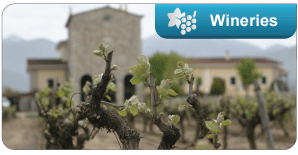Nychteri
The island of Santorini has a long history in the production of traditional wines. One of the most interesting ones still produced today is Nychteri, a dry white wine with a character of its own. Traditionally, it was made from a blend of Assyrtiko, Athiri and Aidani and the grapes remained on their very own clusters during fermentation, resulting in a wine of high alcoholic content that was oaked over a number of years.
Grapes destined for Nychteri were pressed during the night after the harvest, hence the name which derives from the Greek word for "night" (“nychta”). The harvest itself would start in the wee hours of the morning so that the largest part of it would take place while the morning dew kept temperatures down. In other words, through especially hard work, the grapes would stay the least possible time in the vine press before being pressed, while the amount of damage from bruising was minimized because temperatures were lower. Thus, Nychteri was one of the finer wines since the grape must was not oxidized and grape phenols were not macerated. Besides, during the night, grapes run less of a risk of being oxidized and altered since there is no sunlight, the temperatures are lower and the Aegean winds keep the kanaves (Santorini wineries) cool.
Production of Nychteri is still going strong today but employs modern vinification methods. In essence, the varietal composition, the ecosystem and the organoleptic character of the distinct and complex Nychteri of the past have evolved into a modern PDO Santorini wine of high alcoholic content produced from well-ripened grapes and oaked.
Apart from nychteri, Santorini used to produce and, in some cases, still produces other characteristically traditional local wines, such as:
• Vinsanto: the well-known PDO Santorini sweet white wine still produced today
• Mezzo: a red wine somewhat less sweet than Vinsanto which is undergoing a revival
• Xenoloo: made from grape varieties other than the classic local ones ones (foreign)
• Brusco: a rough, tannic wine which necessitated oaking and was produced in all color types from grapes harvested a few at a time for days on end before being pressed (the process was the exact opposite of the process followed in the case of nychteri)


